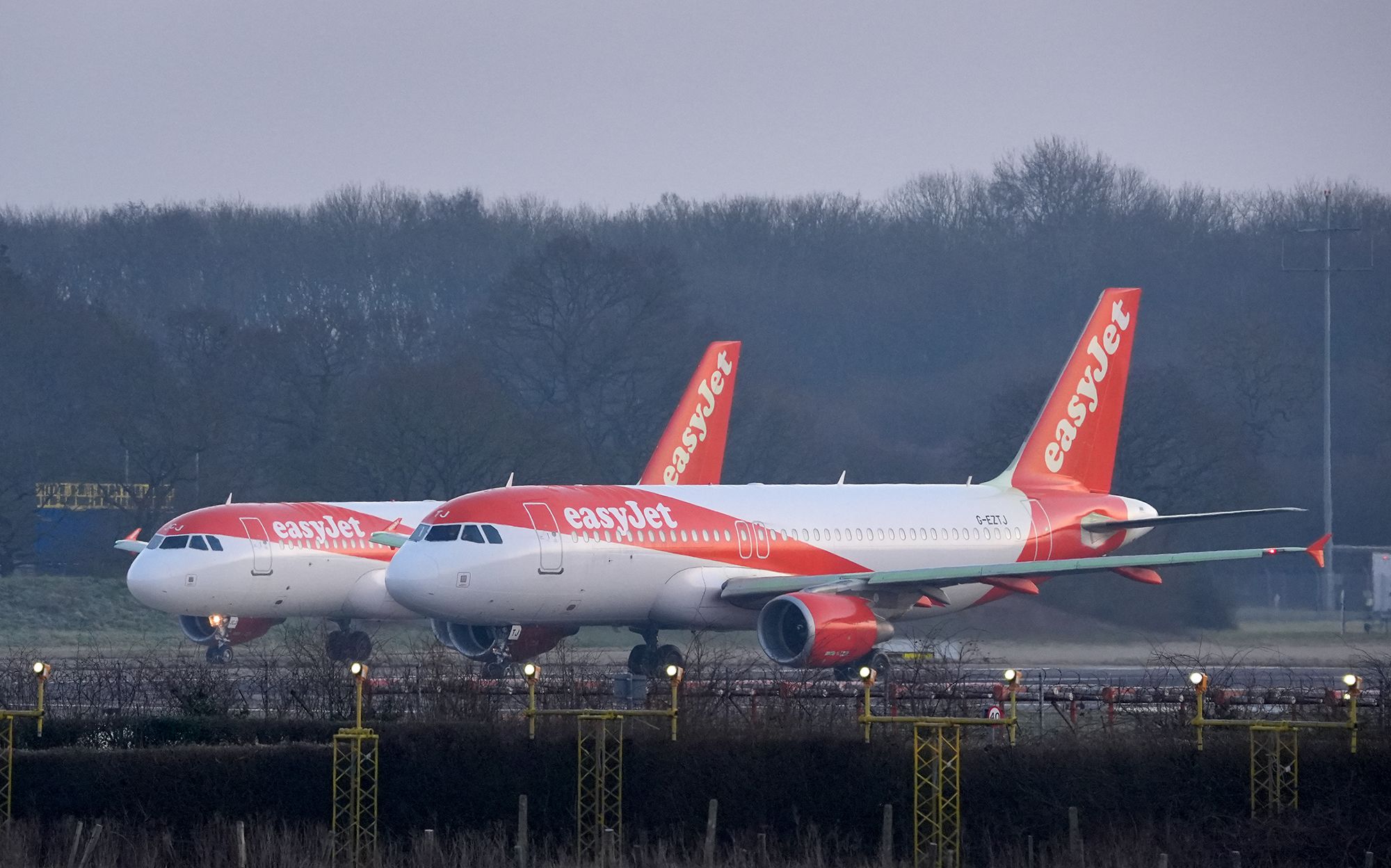
Flying at 32,000 feet with 144 souls on board, the EasyJet Airbus A319 seemed like any other uneventful commercial flight tracing its way across the European sky. But somewhere above Nantes, France, the aircraft suffered a catastrophic electrical failure that rendered it all but invisible to the outside world.
Pilots suddenly found themselves staring at dead instruments, stripped of communication, navigation, and even basic control. Lights went out, radios died, alarms screamed—and for several minutes, the aircraft was blind, mute, and flying through European airspace without any visibility to air traffic control or surrounding planes.
The cause? A faulty generator control unit, quietly recycled through aircraft after aircraft, until one day, it finally triggered a nightmare scenario no crew had ever been trained to survive.
This wasn’t just an equipment failure. It was a fundamental collapse of every layer of redundancy modern aircraft are supposed to guarantee. The Airbus A319, a fly-by-wire aircraft dependent entirely on electrical systems even for its flight controls, should never be capable of losing all vital power.
But it did. And when it did, the very systems designed to protect the aircraft turned against it, isolating the one line of power that was still working—plunging the jet into the kind of dark, silent, and paralyzing failure that sends chills down the spine of even the most seasoned pilot.
The chain of disaster had begun the day before. The aircraft, barely months old, was already a ticking time bomb thanks to a component at the heart of its electrical system: the generator control unit, or GCU.
This specific unit had a known history of issues, having been installed and removed from three separate aircraft over a span of just five months.

Despite repeated failures, the GCU had been sent back to the manufacturer, Hamilton Sunstrand, each time tested, deemed functional, and released back into circulation.
But these tests failed to catch a critical flaw: a faulty sensor that intermittently malfunctioned, sometimes detecting current where none existed, other times failing to detect current at all. It was the worst kind of error—unpredictable, sporadic, and undetectable until it was too late.
On the morning of September 15, 2006, the EasyJet crew began what should have been a routine flight from Alicante, Spain, to Bristol, England. The captain, experienced but relatively new to the Airbus A320 family, and his first officer, slightly more familiar with the aircraft, took all the standard precautions.
They knew they were flying with one engine generator offline, but Airbus protocols allowed such a configuration as long as the auxiliary power unit (APU) was running continuously. The aircraft had been approved for dispatch, and the pilots completed every required checklist. The skies were clear. Everything seemed normal.
For the first hour of flight, nothing seemed amiss. The APU was supplying electricity in place of the offline generator, and the aircraft’s systems operated without issue. But hidden within the electrical system, the defective GCU lurked, waiting to strike. Then, at 10:52 AM, it did.

Without warning, the faulty sensor falsely detected electrical current flowing where there should have been none. Mistaking this for a dangerous backfeed into the inoperative generator, the GCU triggered a protection mode called “welded protection,” which automatically isolated the entire left side of the aircraft’s electrical system.
This included the “essential bus”—a critical electrical artery powering everything from cockpit displays to radios to autopilot. Suddenly, AC Bus 1 and the AC Essential Bus were gone.
What followed was chaos. The cockpit was plunged into partial darkness. The captain’s flight instruments went black. The autopilot disconnected. The thrust system stopped responding.
Most of the overhead panel went dark. The master warning erupted. Radios died. The aircraft vanished from radar, and traffic collision avoidance systems went offline. Cabin pressurization failed. So did the systems controlling the deployment of passenger oxygen masks.
Even the Ground Proximity Warning System, designed to prevent controlled flight into terrain, was dead. The aircraft had effectively gone blind, deaf, and invisible in midair.

The pilots were left with almost no information, no way to communicate, and no knowledge of what had just happened. It was not a failure mode they had been trained for.
Airbus had not anticipated that such a widespread blackout could occur. Even though the system was theoretically recoverable, it required a specific, manual action: pressing a small button labeled "AC ESS FEED" to manually reroute power to the essential systems.
But in the cockpit, flooded with alarms and error messages, and without key instruments or lighting, identifying and activating that switch was nearly impossible. Seconds felt like hours.
Eventually, the crew did manage to restore some functionality by pressing the button, reconfiguring the essential bus to draw power from the other side of the electrical network.
Systems flickered back online. But the damage was done. The aircraft had, for a terrifying period, flown nearly blind and entirely silent through crowded European skies, with no visibility to air traffic control and no ability to detect nearby aircraft. Only sheer luck had prevented a midair collision.
After the aircraft landed safely in Bristol, investigators launched a deep probe. What they uncovered was shocking. The GCU that caused the failure had been installed on three other aircraft. Each time, it had malfunctioned. Each time, it had been returned to service.

Hamilton Sunstrand had no system in place to track or quarantine problematic units. Worse, the internal memory of the GCU was not retained during testing, meaning prior fault histories were wiped clean every time it was sent for repair. The same unit kept causing the same failure on different aircraft—until finally, it nearly caused a disaster.
In the aftermath, Airbus made urgent modifications to the A320 series, changing the electrical logic so that essential systems would automatically reconfigure in case of a power loss, eliminating the need for a manual button press under pressure.
Hamilton Sunstrand updated the GCU logic to require confirmation from multiple sensors before acting on stray current readings. These changes made the A319 and its sister aircraft safer, but they were a reaction—one forced by a brush with tragedy.
For EasyJet and the aviation industry at large, this incident served as a brutal reminder that even the most redundant systems can fail catastrophically if one flawed component is allowed to slip through the cracks again and again.
No system is immune to failure, and no level of training can prepare pilots for situations that manufacturers insist should never occur. Yet in this case, it did. A brand-new Airbus became a ghost in the sky, nearly lost not to weather, terrorism, or human error—but to a tiny sensor that couldn’t make up its mind.
This wasn’t just a close call. It was a systemic failure of oversight, of communication between engineering, manufacturing, and maintenance.
And the only reason 144 people survived that day is because the pilots, despite facing an unimaginable cascade of system losses, kept flying, kept troubleshooting, and ultimately found a way to keep their aircraft in the air. But it should never have come to that.



